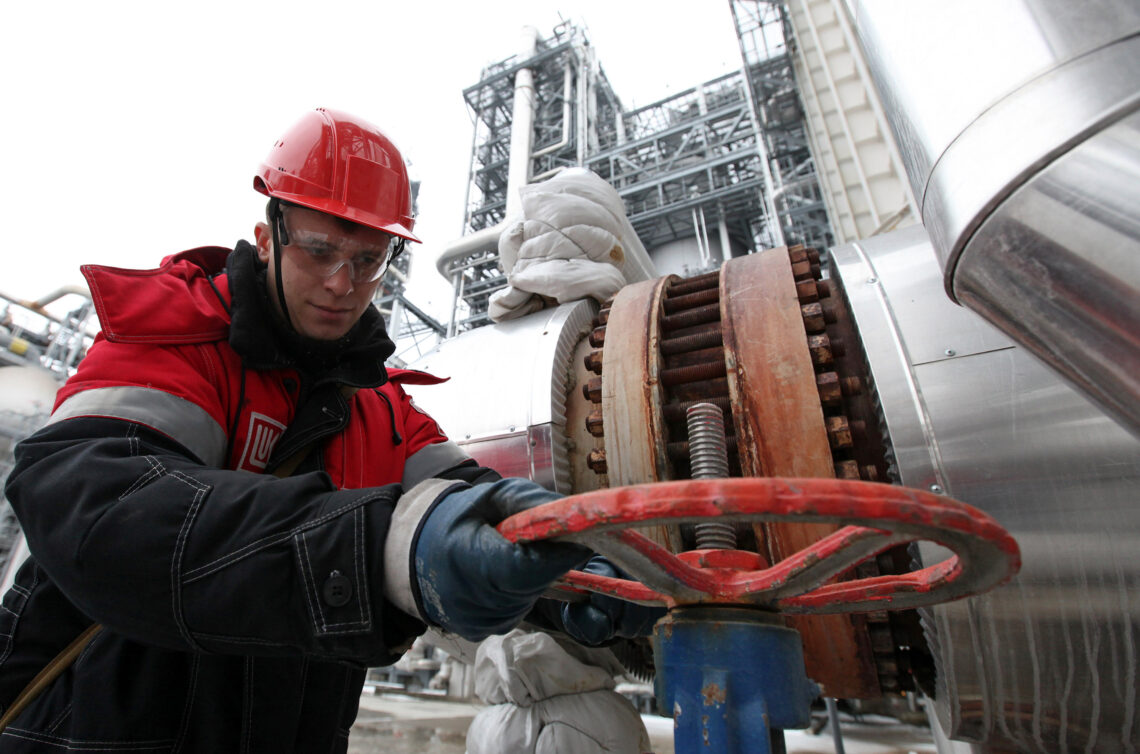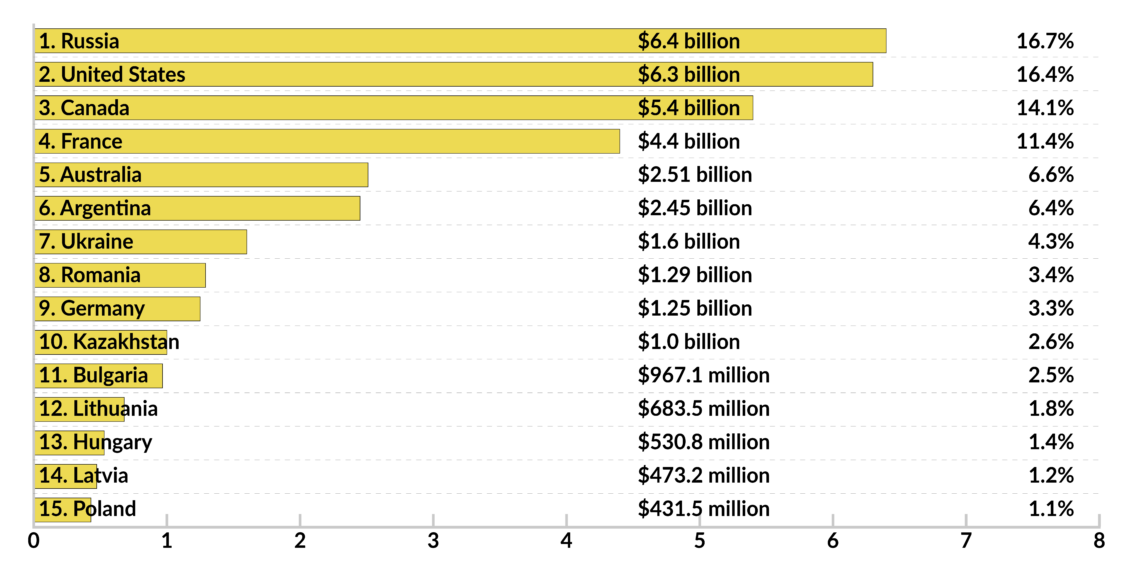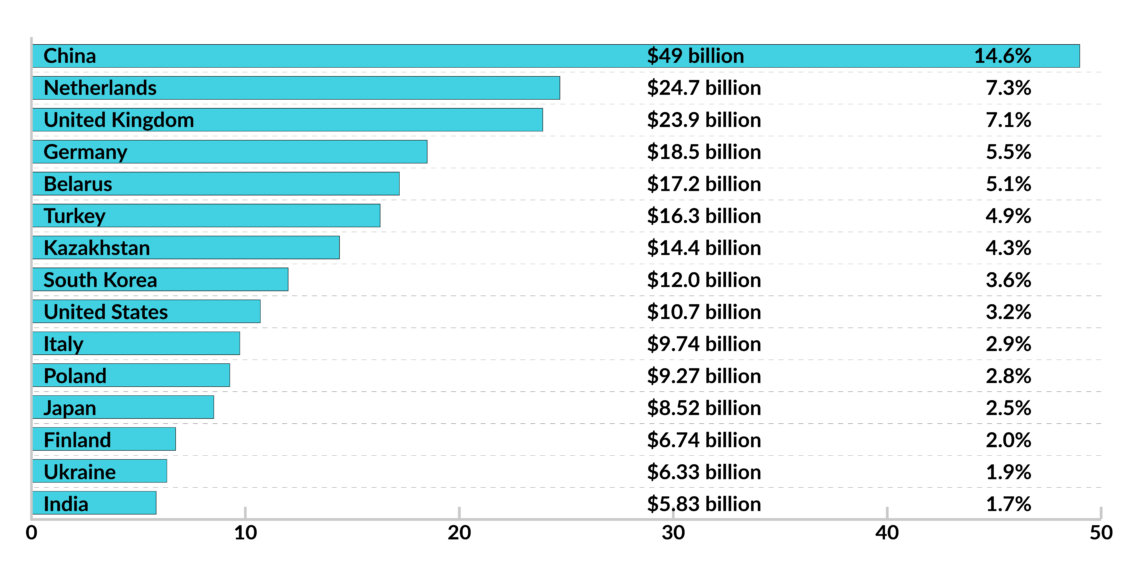Russian exports in focus
The structure of Russian exports in 2020 shows how backward its economy is. Can the country make the transition away from a dependence on fossil fuels and meet the challenges of the future?

In a nutshell
- In 2020, Russian exports still mostly consisted of raw materials
- Advanced technology continues to play only a small role
- This backwardness puts Russia at an economic disadvantage
Exports are a crucial part of nearly every country’s economy, and this is especially true for Russia. Understanding the volumes and structure of these exports can give us insight into how the Russian economy operates, and what its challenges and prospects are as it faces the future.
Russia’s share in global gross domestic product (GDP) is about 2 percent and gradually decreasing, due to economic difficulties that have been building for a decade. Whereas Russia’s GDP was $2.3 trillion in 2013, by 2019 it had fallen to $1.6 trillion. The culprit here is mostly the decline in the exchange rate of the Russian ruble to the dollar by more than 200 percent.
Meanwhile, industrial production has risen by less than 2 percent per year on average. The economic and financial sanctions imposed by Europe and the United States in 2014 following the start of the Russia-Ukraine conflict are a key factor behind the slow growth.
Neither the sanctions nor the exchange rate is the main reason for Russia’s economic problems.
However, neither the sanctions nor the exchange rate is the main reason for Russia’s economic problems. The archaic structure of the economy is to blame. Russia is dependent on exporting fossil fuels and raw materials, which mostly do not undergo local processing into products with high added value. The country also has an unfavorable investment climate, which prevents the inflow of capital into non-resource, high-tech industries. Russian capital has been flowing out of the country for years.
Raw materials
As of 2020, Russia accounts for about 2 percent of exports globally, corresponding to the country’s abovementioned share of world GDP. In 2013, Russian exports amounted to $526 billion. By 2016, this figure had dropped to $281 billion, before rising to $450 billion in 2018 and then sinking again to $336 billion in 2020.
These fluctuations correlate with variations in oil and gas prices. For example, in 2013 the price of Russian Brent crude oil was between $100 and 110 per barrel, while in 2020 it was sold at $30-40. Prices for Russian gas supplied to Europe under long-term contracts are linked to oil prices. Mineral raw materials (which alongside oil and gas also include things like coal) comprise more than half of the value of Russian exports, in some years exceeding 60 percent.
Metals and metal products constitute the second-largest item within Russia’s exports, accounting for about 20 percent of the total. The main metals are steel, nickel, copper, aluminum, lead, gold and platinum. Precious stones (especially diamonds) and derived products are also a significant export category.
Facts & figures

In recent years, Russia has become one of the top grain exporters in the world, selling more than $10 billion of the commodity abroad in 2020 (about 3 percent of total exports). There are several reasons this sector has had success despite the country’s general economic stagnation. First, there has been an influx of investment into the industry, encouraged by a preferential tax regime. Moreover, the depreciation of the ruble has made these exports more attractive in Asian and African markets where demand for grain is growing. Turkey, Iran, Egypt and Saudi Arabia are among the largest buyers of Russian grain.
Chemical products account for 7 percent of the country’s exports. Russia sold more than 30 million tons of mineral fertilizers abroad in 2020, making it the world’s largest exporter of such products. Russia is heavily forested and continues to export wood, pulp and paper products, though in relatively small volumes compared to the past. In 2020, these accounted for less than 4 percent of the total export volume. Shellfish and seafood, mostly produced near Russia’s Pacific coast, are another important export, accounting for 1.38 percent of the total in 2020.
High-tech
When it comes to exports of advanced technology, the most important category is weapons. Russia’s share in the international legal arms trade between 2016 and 2020 was 20 percent, the second-largest portion after the U.S. In 2020, Russian weapons sales abroad came to more than $11 billion, surpassing the value of grain exports.
The next significant area is nuclear technology, including nuclear reactors, fuel rods and associated goods. These exports come to about $1 billion per year. Buyers include countries where Russia has won tenders for the construction and maintenance of nuclear power plants: Ukraine, China, the Czech Republic, Bulgaria and India, among others.
The share of high-tech products in Russia’s 2020 exports came to less than 15 percent of the total.
The country’s other high-tech exports are minimal. In 2020, vehicles like ships, railway locomotive and trams, brought in $5 billion; pharmaceutical products $1 billion. All told, the share of high-tech products in Russia’s 2020 exports came to less than 15 percent of the total.
Consumers and sources
Most of Russia’s exports go to the European Union plus the United Kingdom (about a third), with China the destination for the second-largest share. Here are the top countries importing Russian goods, in percent of Russia’s exports, from March 2020 to February 2021:
Facts & figures

According to official figures, the lion’s share of the country’s exports comes from just a few regions. The city of Moscow accounts for 39.5 percent, even though it does not produce or process any raw materials. The peculiarities of Russian statistical accounting mean the exports come from where a company’s head offices are. The situation is similar regarding St. Petersburg, where Gazprom is headquartered. Russia’s second city accounts for 6.4 percent of the country’s exports.
The coal-rich Kemerovo Oblast in Siberia, which contains the Kuznetsk Basin, is in third place. Along with coal mining, it also has strong metallurgical and chemical industries. Then there are the Sakhalin Oblast and the Khanty-Mansi Autonomous Okrug, which produce much of Russia’s oil and gas. Other regions’ contributions to the country’s exports are negligible. Along with the backward accounting measures, the geographical distribution of major export regions again highlights the outmoded structure of Russia’s economy, in which high-tech goods and services occupy only a small part.
Scenarios
Energy Markets
There are several external factors that could affect Russia's exports beyond 2020. The biggest of these is the situation on global markets, especially the demand for Russia’s main export products. The fight against climate change, as manifested in the gradual increase of renewable energy sources, will play a crucial role. In 2020, the share of renewables in the European Union’s electricity mix increased to 38 percent from 34.6 percent the year prior, overtaking fossil fuels for the first time (37 percent). By 2050, the EU wants to fully decarbonize its economy. China has set 2060 as its deadline for the same goal.
For Russia, this means purchases of crude oil, gas and coal will gradually decrease, as will their prices. The reduction will put severe pressure on the Russian federal budget. In 2020, oil and gas export revenues accounted for 28 percent of budget expenditure.
Weapons and nuclear technologies markets
In the markets for weapons and nuclear technologies, there is stiff competition from both governments and private companies. Much here depends on international relations – and Russia’s position is deteriorating. As a result, the country could lose former markets for these goods, as has recently happened with weapons sales to India.
Russia's economy
Internally, the future of Russian exports will hinge on whether the economy can transition toward modernity. The government is trying to speed up economic growth by stimulating production, primarily in high-tech industries. It is due to publish a plan for further action this summer. But even if this strategy succeeds, the changes in the Russian economy will only become evident a few years down the road.
At the same time, Russia does not only need economic reforms, but also the strengthening of the main state institutions that determine the political and public life in the country. The people of Russia are waiting to see whether these profound changes will begin in the coming years.







